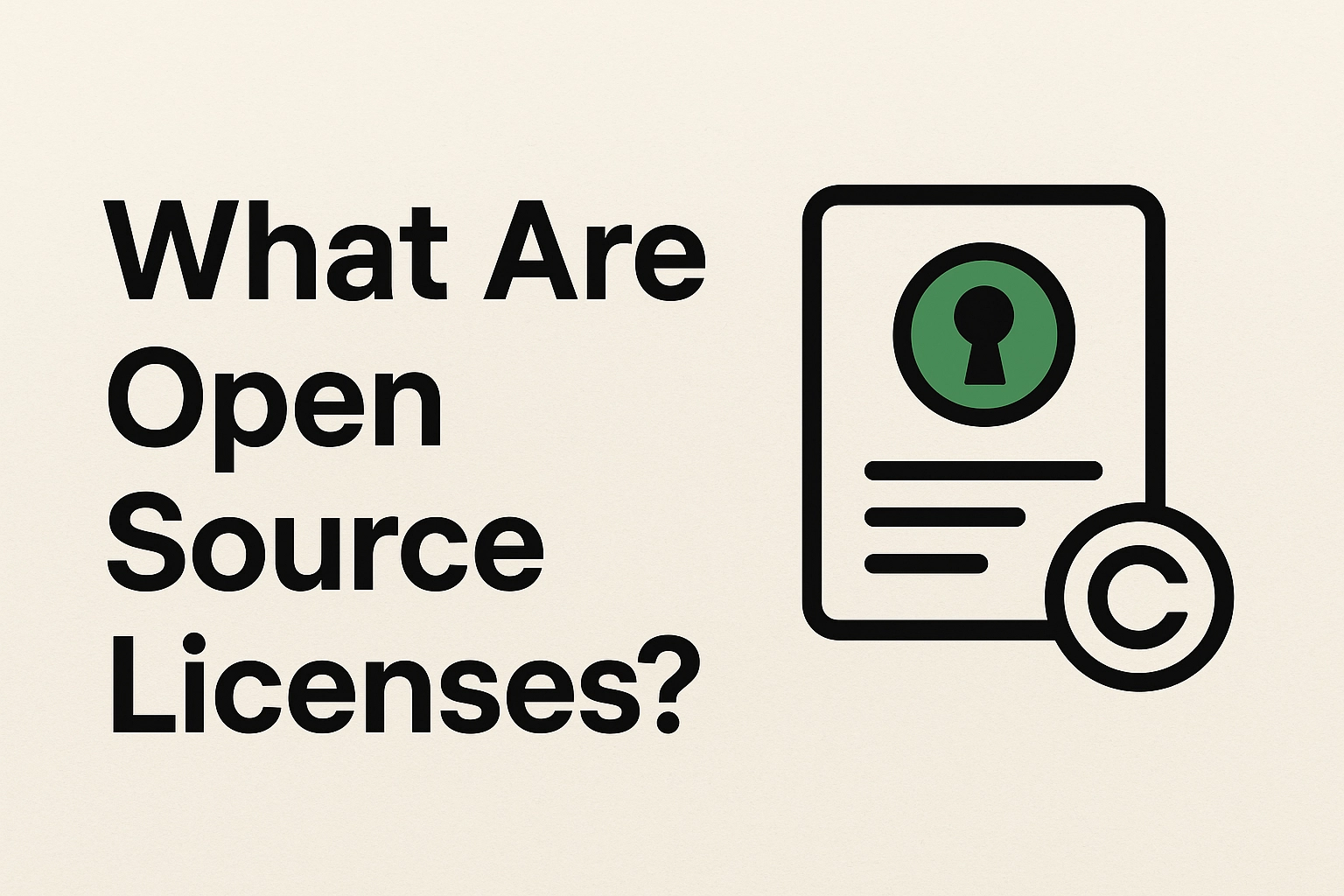Open source is everywhere — from your smartphone’s operating system to your favorite development tools. But behind every open-source project is a license that defines how you can use, modify, and distribute the software. If you’re planning to launch an open-source project or simply use one, understanding these licenses is critical. In this article, we’ll break down the most popular open-source licenses, their key differences, and examples of well-known apps that use them.
What Is an Open Source License?
An open source license is a legal document that grants users rights to use, study, modify, and distribute software. These licenses ensure that software remains accessible while protecting the rights of both creators and users.
There are two main categories:
-
Permissive licenses – Flexible, minimal restrictions.
-
Copyleft licenses – Require derived works to also be open source under the same license.
Why Understanding Open Source Licenses Matters
-
Legal clarity: Avoid unintentional copyright violations.
-
Compliance: Some licenses have obligations like attribution or sharing code.
-
Business strategy: Choose a license aligned with your goals (e.g., community adoption vs. proprietary integrations).
Common Open Source Licenses (With Examples)
Below are the most widely used open-source licenses, explained simply, along with famous projects using them.
1. MIT License
-
Type: Permissive
-
Key Features:
-
Minimal restrictions.
-
Allows private or commercial use without releasing source code.
-
Requires attribution to the original author.
-
-
Example Apps:
-
React (JavaScript UI library by Meta).
-
jQuery (the classic JavaScript library).
-
Tailwind CSS (utility-first CSS framework).
-
Why it’s popular: Its simplicity and flexibility make it ideal for startups and open-source enthusiasts alike.
2. Apache License 2.0
-
Type: Permissive
-
Key Features:
-
Similar to MIT but includes explicit patent rights.
-
Requires a NOTICE file with attribution.
-
Compatible with many commercial projects.
-
-
Example Apps:
-
Apache HTTP Server (the web server powering millions of sites).
-
Kubernetes (container orchestration platform).
-
Elasticsearch (search and analytics engine – pre-2021 versions).
-
Why it’s popular: Strong patent protection plus permissive terms attract businesses.
3. GNU General Public License (GPL v3)
-
Type: Copyleft
-
Key Features:
-
If you distribute modified versions, you must also release them under GPL.
-
Promotes software freedom and community sharing.
-
-
Example Apps:
-
WordPress (content management system).
-
GIMP (GNU Image Manipulation Program).
-
MySQL (database server).
-
Why it’s popular: Guarantees that derivative works stay free and open source.
4. GNU Lesser General Public License (LGPL)
-
Type: Weak Copyleft
-
Key Features:
-
Designed for software libraries.
-
Allows linking with proprietary software but modifications to the library itself must be open source.
-
-
Example Apps/Libraries:
-
FFmpeg (multimedia framework).
-
LibreOffice SDK.
-
GTK+ (used in Linux desktops).
-
Why it’s popular: It’s a middle ground between permissive and strong copyleft.
5. Mozilla Public License 2.0 (MPL)
-
Type: Weak Copyleft
-
Key Features:
-
Modifications to MPL-covered files must be open source.
-
Other parts of your codebase can remain proprietary.
-
-
Example Apps:
-
Firefox (web browser).
-
Thunderbird (email client).
-
Why it’s popular: Good balance for companies contributing to open source but keeping proprietary add-ons.
6. BSD License (2-Clause or 3-Clause)
-
Type: Permissive
-
Key Features:
-
Similar to MIT but with slight differences in attribution and endorsement clauses.
-
Widely used in academic and infrastructure software.
-
-
Example Apps:
-
FreeBSD (operating system).
-
OpenSSH (secure shell suite).
-
Why it’s popular: Originated in academia and remains a go-to for system software.
7. Creative Commons Licenses (For Content)
Although not for software, Creative Commons (CC) licenses are often used for documentation, images, or datasets in open-source projects.
-
Example:
-
Wikipedia uses CC BY-SA (attribution, share alike).
-
How to Choose the Right Open Source License
When selecting a license for your own project, consider:
-
Your goals: Do you want maximum adoption (MIT) or mandatory openness (GPL)?
-
Business model: Will you offer paid support or dual licensing?
-
Community standards: Use what’s common in your ecosystem for easier contributions.
A handy tool: choosealicense.com provides plain-English summaries.

